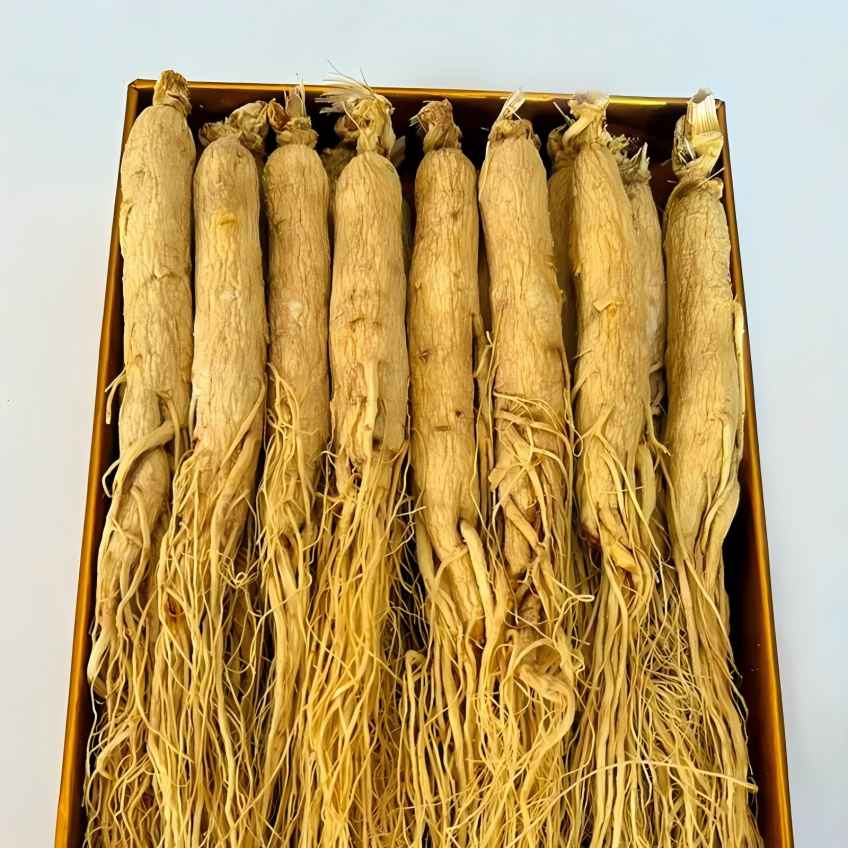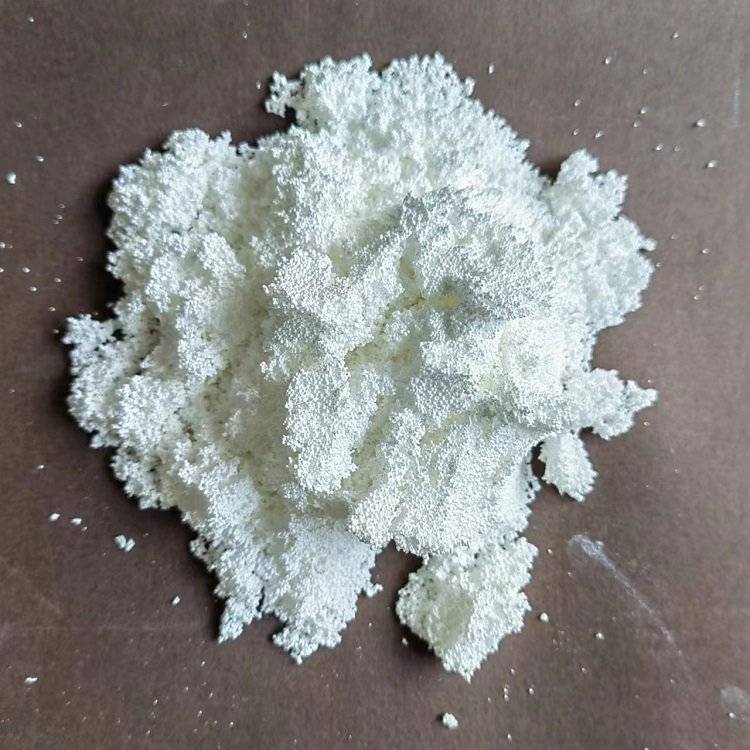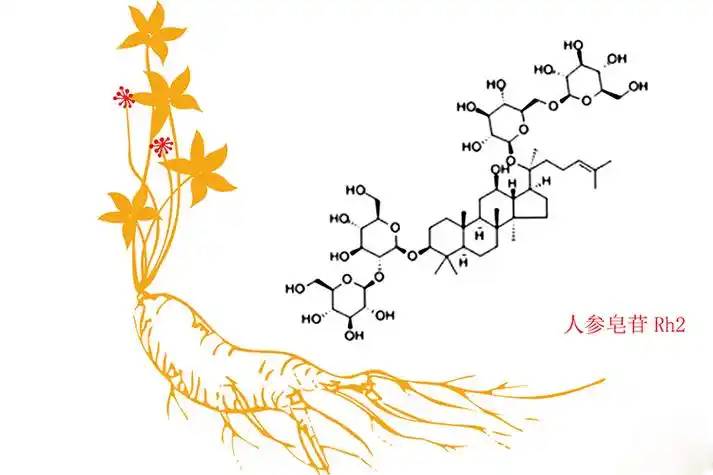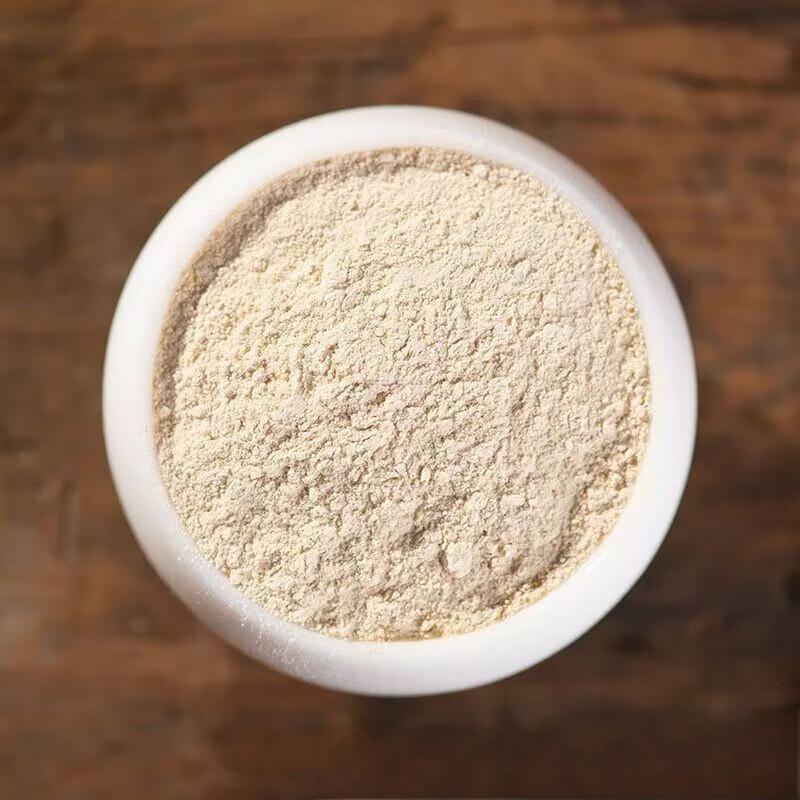인삼 추출물에서 어떻게 진세노사이드를 분리하는가?
인삼 is the dried root of the plant Panax ginseng C다.A. Mey, which is mainly produced in the Changbai Mountains of Jilin, Liaoning, Heilongjiang, Hebei, Shanxi and other places in China. It is a traditional and precious Chinese medicinal herb. Modern research has shown that more than 40 ginsenoside monomers have been isolated and identified in ginseng, followed by ginseng polysaccharides, amino acids, proteins, ginseng diol, ginsenoside, and other active ingredients. Among these, ginsenosides are one of the main active ingredients in ginseng, and have pharmacological activities such as protecting heart function, lowering blood sugar, anti-oxidation, anti-fatigue, and anti-tumor [1-3]. Selecting a reasonable extraction and separation method to obtain high-quality ginsenosides has become a research hotspot.
문헌보고 [4-5]에 따르면, decoction, percolation, Soxhlet 추출, column chromatography와 같은 전통적인 추출 및 분리 방법은 한의약 제약 산업의 발전에 상당한 역할을 해왔다.그러나 이러한 방법들은 모두 추출 주기가 길고, 유효성분의 손실이 크며, 추출 효율이 낮은 등의 다양한 정도의 문제점을 가지고 있다.현대과학기술의 지속적인 발전에 따라 초임계 이산화탄소추출기술, 마이크로파보조추출기술, 초음파추출기술 [6-7] 등 많은 새로운 추출과 분리기술이 나타났다.이러한 기술을 리용하면 생산원가를 절감할수 있을뿐만아니라 수확량도 제고되여 인삼의 공업화, 정밀화, 자동화에 기술지도를 제공한다.

1 추출방법
에 있는 많은 문제점을 해결하기 위해 다음과 같이 정리하였다extraction of ginseng, in recent years, research on new techniques for extracting traditional Chinese medicine has been very active in China, and considerable progress has been made. These techniques not only extract the maximum amount of ginsenosides from ginseng, but also avoid problems such as the loss of ginsenosides and the dissolution of inactive ingredients.
1.1 마이크로파 추출법
마이크로파 추출은 설비가 간단하고 시간이 절약되며 추출률이 높고 투자가 적으며 용매가 절약되고 오염이 적은 등 장점이 있다.류영련 [8] 등은 말린 미국인삼 뿌리에서 마이크로파 추출법을 이용하여 ginsenoside를 추출한 결과, ginsenoside의 수율은 5.53%로 ethanol 역류추출법에 비해 29% 높았으며, 추출시간은 ethanol 역류추출법의 2%로 나타났다.
또 다른 실험 [9] 에서는 마이크로파 추출에 의한 진세노사이드 추출률이 8%로 기존 역류법의 2.67배임을 확인하였다.장징 등 (10)은 마이크로파 추출법을 이용하여 진세노사이드 (ginsenoside)를 추출하였는데 5.25%의 추출율로 기존 역류법의 1.67배였다.송야희 [11] 등은 마이크로파 추출법을 이용하여 ginsenoside를 추출하였으며, 그 결과이 방법에서의 ginsenoside의 추출율은 약 8%인 반면, 역류법은 3.27% 임을 확인하였다.마이크로파 추출은 열에 안정적인 제품에만 적합하다는 점을 주목할 필요가 있습니다.열에 민감한 물질의 경우 마이크로파 가열로 인해 이러한 성분이 변성 또는 불활성화될 수도 있습니다.
1.2초음파 추출법
초음파 추출법은 소량의 용매를 사용하고, 추출효율이 높으며, ginsenosides의 활성에 영향을 미치지 않는다.지샤오후이 (Ji Xiaohui) [12] 등은 초음파 추출법을 이용하여 미국인삼의 줄기와 잎에서 ginsenoside Re를 추출하였으며, 추출율은 2.77%로 기존의 물 추출법에 비해 약 1.2배 정도 추출되었다.Zheng Yi [13] 등은 초음파 방식으로 ginsenoside를 추출하였는데, 이는 기존 추출법의 5.01%보다 훨씬 높은 8.13%의 추출율을 보였다.진담화 [14] 등은 초음파법을 이용하여 ginsenosides를 추출하였으며, 중심복합체 설계법을 이용하여 최적의 추출조건을 결정하였으며, 이들 조건에서의 총 인삼 사포닌 추출율은 5.23%로이 방법이 기존의 다른 방법에 비해 추출율이 높고 에너지 소모량이 적은 장점이 있음을 확인하였다.
초임계 유체 추출법 1.3
초임계 유체 추출 기술은 독성이 없고 잔류 용매를 사용하지 않으며 비용이 저렴하고 에너지를 절약할 수 있는 새로운 추출 방법이다.장르 [15]는 극성이 낮기 때문에 초임계 유체 추출 기술을 이용해 진세노사이드를 추출했다.진세노사이드의 추출율은 약 2.76%로 나타나 기존의 역류추출법 (3.26%)보다 약간 낮은 것으로 나타났다.이 방법은 극성이 높은 사포닌을 추출하기가 더 어렵지만, 극성이 낮은 희귀 사포닌을 추출할 때 오염이 적고 용매 잔류가 없어 친환경적이며 기존의 역류법과 비교할 수 없는 장점이 있다.
장샤오칭 [16] 등은 초임계 유체 추출 기술을 이용해 추출했다ginsenosides Rh1 and Rh2 from ginsenosides. The results showed that the yields of ginsenosides Rh1 and Rh2 were 7.33% and 14.69%, respectively, which were higher than those of the traditional reflux extraction method. Another experiment proved [17] that after a specific surfactant was introduced into the extraction system, the extraction rate of ginsenosides reached 15.9%, which is 13.3 times higher than that without the addition of surfactant. Although this technology has the advantages of low-temperature operation, rapidity and environmental protection, it has problems such as high equipment investment, high production costs and safety. Therefore, attention should be paid to these problems when promoting and applying the method.

1.4 효소 추출법
Enzyme hydrolysis is a new technology used in recent years for the extraction of active ingredients from natural plants. The use of the right enzyme can gently break down plant tissue, accelerate the release of active ingredients, and thereby increase the extraction rate [18]. Zhang Ying [19] and others have demonstrated that the extraction of ginseng after treatment with laccase from the basidiomycete Trametes versicolor can significantly increase the extraction rate of total ginsenosides. This method improves the extraction rate by 65.31% compared to water extraction. Wang Ye [20] and others found that the enzymatic hydrolysis of lac enzyme increased the extraction rate of ginsenoside Re to 0.511%, which was 90.0% higher than the traditional heating reflux method. Wu Qing [21] and others used the cellulase method to extract ginsenosides from ginseng leaves and found that the ginsenoside extraction rate was as high as 6.29%. Although the enzymatic extraction method has the advantages of high catalytic efficiency and mild catalytic conditions, this technology has high requirements for enzymes and production conditions. Therefore, in future research work, it is necessary to strengthen the control of the generated products and establish the screening of special active enzymes.
생체모방 추출법 1.5
생체 추출 [22]은 인체 위장관의 소화와 작동을 모사하여 pH 가 다른 산성수와 알칼리수를 순서대로 추출하여 생체 추출물을 얻는다.진세노사이드의 추출은 주로"like를 녹인다"는 원리에 의거하기 때문에 추출용매와 조건은 인체소화기관의 생리조건과 매우 다르므로 사포닌 성분은 일반적으로 체외에서 효과를 발휘하지만 일단 인체에 들어가면 효과를 발휘하지 못하게 된다.이러한 현상을 바탕으로 천신 [23]은 생체 모방 용매와 물을 추출 용매로 사용하여 ginsenoside를 추출하였고, 생체 모방으로 추출한 ginsenoside의 수율이 61.31%로 물 추출법으로 얻은 54.26%의 수율보다 높은 것을 확인하였다.이 방법은 추출율이 높고, 생산 주기가 짧으며, 전통 한약의 원래 기능을 변경하지 않는 특징을 가지고 있지만, 현재도 열에 민감한 활성 성분에 일정한 영향을 주는 열 추출 방법입니다.따라서이 기술을 사용할 때 일부 열에 민감한 활성 성분의 보호에 주의를 기울여야 합니다.
1.6기타 방법
In recent years, due to the rapid development of ginsenoside extraction technology, many techniques have emerged in addition to the above extraction techniques. For example, the two-phase extraction method: it is a new extraction technique that uses the difference in the distribution of substances in two phases for extraction. Zhang Ru et al. [24] used the two-phase extraction method to extract ginsenosides from ginseng roots, and found that the recovery rate of ginsenosides in this system was higher than that of the traditional extraction method. Maceration method: Since ginsenosides are highly soluble in water, they can be extracted from all ginseng saponins. Zhang Chunhong [25] et al. used the maceration method to extract ginsenosides with an extraction rate of 8.33%.
또 다른 실험 [26]에서 인삼을 마더레이션법을 이용하여 48시간 동안 담근 후, ginsenosides Rb1, Rg1, Re의 추출율이 각각 2.906%, 0.2450%, 1.3420% 임을 증명하였다.역류법:우장종 [27] 등은 역류법을 이용하여 ginsenoside를 추출하였으며, 총 ginsenoside 추출율은 5.52%, 총 ginsenoside Rg1 및 재추출율은 0.2473%로 기존의 마테레이션법보다 높은 결과를 보였다.고압 추출법:천루이잔 [28] 등은 고압 추출법을 이용해 인삼에서 진세노사이드를 추출했고, 그 결과 고압 추출법으로 추출한 진세노사이드의 수율이 7.76%로 기존 추출법보다 훨씬 높음을 증명했다.
2. 단량체를 분리하고 정제하는 방법
인삼 사포닌은 화학적으로 불안정하여 효소와 산성 상태가 있으면 쉽게 가수분해된다.현재 인삼 사포닌 단량체를 분리 및 정제하는 방법으로는 대식성 흡착수지를 이용한 분리 및 정제방법, 고속대향류 크로마토그래피 분리방법, 발포부유 분리방법 등이 있다.이러한 방법은 높은 분리 및 정화, 좋은 분리 효과 및 빠른 속도의 장점을 가지고 있으며 넓은 응용 전망을 가지고 있습니다.
2.1대 흡착수지 분리 및 정제 방법
Xie Liling [29] 등은 대식 흡착수지를 통한 인삼 총 사포닌의 정제과정을 연구한 결과, 대식 수지에 의한 분리 및 정제 후 얻어진 ginsenosides Rg1, Re 및 Rb1의 총 추출율은 0.989% 임을 확인하였다.또 다른 보고서 [30]도 약극성 대성 수지를 이용하여 추출한 진세노사이드의 순도가 60% 이상에 달할 수 있음을 증명하였다.케이웅 [31] 등은 대성 수지를 이용하여 농축 및 정제 후 진세노사이드의 용출률이 90% 이상임을 확인하였다.류지화 [32] 등은 대식 흡착수지를 이용하여 미국 인삼 과육에서 total ginsenoside를 추출한 결과, total ginsenoside 함량이 50%를 초과함을 확인하였다.손청펭 [33] 등은 D101C 거대성 흡착수지를 이용하여 인삼뿌리에서 총 ginsenosides를 분리 및 정제하였으며, 분리순도는 94.62%에 달했다.이 방법은 분리순도가 높지만 적용에도 일정한 한계가 있으며 분리대상은 주로 사포닌, 알칼로이드 등 성분에 집중된다.적용시 수지 잔류물 및 크래킹 제품에 대한 검출 방법도 마련되어야 하며, 합리적인 한계 기준을 마련해야 한다.

고속 대향 크로마토그래피 분리법 2.2
고속 대향 크로마토그래피는 최근 개발되고 있는 새로운 분리 기술이다.시료의 90% 이상을 분리할 수 있습니다.그것은 큰 준비 볼륨, 좋은 분리 효과, 빠른 속도의 장점이 있습니다.장민 [34] 등은 고속대향류 크로마토그래피를 이용하여 3가지 ginsenoside 단량체 화합물인 Re, Rg1, Rg3를 분리하였으며, 그 순도는 HPLC에서 95% 이상으로 검출되었다.또한 문헌 보고 [35]에 따르면 동일한 방법을 사용하여 ginsenosides Rg1, Rf 및 Rd를 제조하였으며, 이들의 순도는 HPLC에서 확인한 결과 각각 96.2%, 94.3% 및 95.1% 이었다.이를 통해 고속 대전류 크로마토그래피가 기존의 컬럼 크로마토그래피보다 단순하고 빠르며, 실용적 응용가치가 우수함을 확인하였다.
2.3 폼 부유 분리 방법
The foam flotation separation method is a technique that uses the difference in adsorption of substances on the surface of bubbles to separate and purify. It has the characteristics of high enrichment and no need for organic solvents. Wang Yutang [36] and others used dynamic foam flotation to separate and enrich diol-type ginsenosides in ginseng water extract. The results showed that the enrichment efficiency of dynamic foam flotation for ginsenosides Rb1, Rc, Rb2 and Rd was better than that of other methods, with recovery rates of 93.3%, 98.6%, 96.9% and 98.3%, respectively. The presence of surface-active ingredients in the solution is one of the necessary conditions for foam separation. Ginseng saponins have surface-active properties, and can produce stable foam when stirred or aerated, which makes ginseng water extract suitable for foam separation [37]. It can be seen that the use of foam flotation separation can also effectively increase the enrichment factor of ginseng saponins and improve the yield of ginseng saponins.
3. 여러 기술을 복합적으로 사용합니다
현대 추출, 분리기술이 신속히 발전함에 따라 여러 기술의 결합사용이 점차 인삼산업에 침투되였다.기술의 복합적 이용은 인삼추출물의 특성을 대상으로 할 수 있으며, 각각의 장점을 최대한 살리고, 상호 보완'의 부족한 점을 파악하고 각자의 적용범위를 넓혀라.이를 통해 더 짧은 시간, 더 낮은 에너지 소비, 더 빠른 속도로 높은 수율의 진세노사이드를 추출할 수 있으며 폭넓은 응용 가능성을 가지고 있다.
3.1초음파 강화 초임계 유체 추출법
Ultrasonic-enhanced supercritical fluid extraction technology is a combined technology that enhances the ability of supercritical fluid extraction to separate effective substances in traditional Chinese medicine through an ultrasonic field. This technology has the characteristics of reducing extraction pressure and temperature, shortening extraction time, reducing energy consumption, reducing fluid flow, and high extraction rate. Luo et al. [38] used ultrasonic-enhanced supercritical fluid extraction to extract ginsenosides and analyzed the extraction rate of ginsenosides before and after the addition of ultrasound. The results showed that the extraction rate of ginsenosides was 8.06% before the addition of ultrasound. Under the optimized conditions after the addition of ultrasound, the ginsenoside extraction rate reached 13.20%. It can be seen that the addition of ultrasound can significantly improve the extraction rate and production efficiency of supercritical CO2 extraction of ginsenosides.
3.2초음파-실리카 겔 컬럼 크로마토그래피
Wang Lele [39] 등과 함께 초음파-실리카겔 컬럼 크로마토그래피 기술을 혼합하여 ginsenoside Rg1을 분리, 정제하였다.그 결과,이 방법을 이용하여 인삼의 50 g을 분리하여 89.63%의 순도로 약 9.91 g의 ginsenoside Rg1을 얻을 수 있음을 확인하였다.이 방법은 정확하고 비용이 저렴하며 얻어진 제품의 순도가 높습니다.그리고 고품질 진세노사이드 Rg1을 얻는 효과적인 방법으로 사용될 수 있다.이 방법은 초음파법의 장점, 즉 조작이 간단하고, 시간이 짧으며, 수율이 높은 장점을 그대로 가지고 있을 뿐만 아니라, 진세노사이드 단량체를 더욱 분리, 정제하여 순도를 향상시키는 고전적인 실리카겔 컬럼 크로마토그래피 기법의 장점을 그대로 가지고 있다.따라서 결합 된 초음파-실리카 겔 컬럼 크로마토그래피 기술은 또한 진세노사이드의 수율과 순도를 향상시키는 효과적인 방법입니다.
3.3대성 흡착 수지-실리카 겔 컬럼 크로마토그래피
In order to obtain ginsenoside Rd, Wang Yan [40] and others used macroporous adsorption resin technology to extract total ginsenosides from 1 g of ginseng, and then separated ginsenoside diol to obtain ginsenoside Rd. The ginsenoside diol was then separated using silica gel column chromatography to obtain relatively pure ginsenoside Rd. The result was relatively pure ginsenoside Rd 500 mg, with a yield of 50% and a purity of 98%. This method takes advantage of the characteristics of the two methods for ginseng extract, and combines the two methods in an integrated manner to give full play to their respective advantages, complement each other's의 결핍, 각각의 적용 범위를 확장하고, ginsenosides의 순도를 향상시킵니다.
4 결론
Ginsenosides are one of the main active ingredients in ginseng, 좋은 약리 학적 활동 및 임상 약용 가치를 가지고.이들에 대한 시장 수요가 크기 때문에 양질의 진세노사이드를 효율적으로 추출하는 방법에 대한 관심이 높아지고 있다.최근 한의약 분야의 지속적인 신기술 도입과 개발로 진세노사이드 추출 및 분리에 일부 성과가 나타나고 있다.본 논문은 인삼에서 진세노사이드를 추출하기 위해 일반적으로 사용되는 방법을 비교한다.이러한 신기술은 표적성이 높고, 수율이 높아 성분의 손실이 거의 없고, 에너지 소비가 적은 장점이 있음을 보여준다.
However, they also have their own limitations. Different extraction methods focus on the crude extraction of ginsenosides, and the purity of the extracted ginsenosides is not high. The method of separating and purifying the monomers can make up for the shortcomings of the above extraction methods. However, no matter which method is used to extract and separate ginsenosides, the purity cannot be maximized. Only by combining technologies in an integrated manner, giving full play to their respective advantages and complementing each other'의 결핍, 각각의 적용 범위와 효과가 확대될 수 있다.현재 연구로 볼 때, 여러 기술의 복합적 활용은 대부분 실험실 연구 단계이다.이를 인삼 조제생산에 적용하기 위해서는 아직 해결해야 할 기술적 문제들이 많다.연구기관과 기업이 협력하여 인삼의 내재적 품질을 높이고 새로운 기술을 지속적으로 탐색, 개발하여 인삼생산에 널리 사용되고 인삼산업의 현대화에 역할을 할 수 있도록 노력해야 할 것이다.

참조
[1] 풍연.인삼의 약리학적 효과 및 임상적 응용에 관한 연구 진행.한의학임상연구, 2013, 5(6):121-122.
[2] 허도통, 왕빙, 천정명.진세노사이드 (ginsenosides)의 약리학적 효과에 대한 연구 진행.요녕한의대학교 논문집 2012, 14(7):118-120.
[3] 양규야, 리샤오유, 류가린.ginsenoside Rb1의 약리학적 효과에 대한 연구 진행 [J.중국약학저널 2013, 48(15):1233-1236.
[4] 장춘홍, 장련수, 리상오 등.기존의 물 추출법과 인삼 사포닌의 새로운 추출법의 비교 연구 (J.중국한방의학, 2006, 29(10):1040-1042.[5] 양릴링, 우타이.담금법에 의한 인삼 사포닌 추출을 위한 최적 담금시간에 관한 연구 (J.연남대학논문집 2009, 32(5):39-41.
[6] 장위, 리취안, 콩정향 등.총 ginsenosides와 ginsenoside Rb1의 추출공정에 대한 연구 진행 [J.Anhui Agricultural Science, 2010, 38(39):16218.
[7] 쉬시알레이, 연리진, 류정보 외.파낙스 인삼 C. M. Mey[J] 잎의 ginsenosides Matrix solid phase dispersion 추출.식품화학, 2011, 129 (3):1253-1257.
[8] 류영련, 정청, 마오쩌둥 외.인삼, ginsenosides의 활성성분의 마이크로파 추출에 관한 연구 (J.광저우대학교 논문집 2006, 5(6):52-55.
[9] 마오줄린, 리샤오보, 궁원밍 외.진세노사이드 (ginsenosides) 추출공정의 최적화.시젠국약, 2008, 19(11):2762-2763.
[10] 장징, 첸콴청, 궁샤오지에 외.다양한 추출방법이 ginsenosides의 추출율에 미치는 영향.지린농업대학, 2003, 25(1):71-73.
[11] 송야희, 장샤오준.인삼 사포닌의 추출공정에 관한 연구 (J.헤이룽장 과학기술정보, 2009, 31:240.
[12]지 샤오후이.미국인삼 줄기와 잎으로부터 ginsenoside Re에 대한 초음파 추출공정의 최적화 (Optimization of the ultrasonic extract process for ginsenoside Re from American 인삼 stem and leaves)후베이 농업과학, 2013, 52(13):3137-3139.
[13] 인삼총사포닌의 추출공정의 최적화 정 Y, 루 H.진링공학회논문집 2008, 24(2):89-91.
[14] Jin D, Wu J, Zhao Y 등.인삼에서 추출되는 총 사포닌의 초음파 추출공정을 최적화하기 위한 중심합성물질설계-반응표면분석법 (Central composite design-response surface analysis method for optimizing the total saponins)시젠한의학, 2012, 23 (9):2148-2150.
[15] 장르, 송풍뢰, 왕기 등.인삼으로부터 희귀 진세노사이드 초임계 이산화탄소 추출 [J.응용화학, 2010, 27(12):1483-1485.
[16] 장샤오칭, 웨이푸샹, 장난 등.초임계 CO2에 의한 ginsenoside Rh1과 ginsenoside Rh2의 녹색추출에 관한 연구 (J.허베이대학교 논문집 2012, 33(6):544-548.
[17] 루오 등린, 루오 레이, 류잔수 외.계면활성제가 초임계 CO2에 의한 인삼 사포닌 추출에 미치는 영향 (J.한국농업공학회 학술발표대회 논문집 2009, 25 (1):204-206.
[18] 류레이, 주세미, 왕치준 외.흑삼 [J] 으로부터 20(S,R)-Rg3의 형질전환에 의한 20(S,R)-protopanaxadiol의 효소적 제조.Phytochemistry, 2010, 71 (13):1514-1520.
[19] 자오샤오후, 장홍메이, 양진웨이 외.직교실험을 이용한 인삼내 ginsenoside Rg1의 최적 효소 가수분해 과정 연구 (J.중국한방의학, 2010, 41 (8):1279-1282.
[20] 장잉.진세노sides의 추출을 위한 basidiomycete laccase의 이용연구 (Research on the use of basidiomycete laccase for the extract of ginsenosides [J.헤이룽장과학기술정보, 2011, 36:2-3.
[21] 왕예, 심밍하오.basidiomycete laccase에 의한 ginsenoside Re 추출과정에 관한 연구 (J.한국농산물가공학회지 2012, 6:5-8.
[22] 우칭, 니닝, 왕유룽 등.실험-반응표면방법론의 설계를 이용한 인삼잎의 효소추출공정의 최적화.중국실험치료학회지 2006, 12(4):5-8.
[23] 천신, 후차오기, 장홍창 외.모의 생화학적 방법에 의한 ginsenosides의 추출에 관한 기초 연구 (J.중국약학, 2012, 23(19):1751-1754.
[24] 장루, 장비안링, 시타오 등.인삼뿌리로부터 2 상계에 의한 ginsenosides의 추출에 관한 연구 (J.Natural Product Research and Development, 2012, 24:1610-1613.
[25] 장춘홍, 장종시, 정률성 등.maceration에 의한 진세노사이드 추출의 최적과정에 관한 연구 (J.지린농업대학, 2003, 25(1):73-74, 78.
[26] 양릴링, 우타이.맥적법에 의한 진세노사이드 추출을 위한 최적 담금시간에 관한 연구 (J.Yunnan College of Traditional Chinese Medicine, 2009, 32(5):39-41.[27] 우장종, 저우궈밍, 시유경.직교실험에 의한 ginsenosides의 추출과정에 관한 연구 (J.한약학, 2002, 13(1):18-19.
[28] 천루이잔, 장쇼친, 왕창정.직교실험을 이용한 초고압 추출에 의한 인삼의 진세노사이드 추출공정의 최적화 연구 (J.한약재, 2005, 36(3):365-368.
[29] 시릴링, 렌리, 라이 샹성 외.홍삼으로부터 총 ginsenosides의 추출 및 정제과정에 관한 연구 (J.한의학 재료 (Traditional Chinese Medicine Materials), 2009, 32(10):1602-1605.
[30]Yao H, Wan Y, Shen Y 등.거대흡착수지에 의한 ginsenosides의 정제에 관한 연구.글로벌한의학, 2013, 6(2):84-86.
[31] 채옹, 류종규, 왕필순 등.거대흡착수지에 의한 인삼 총사포닌의 정제공정 (J.중국특허의학, 2001, 23(9):631-633.
[32] 류지화, 주태, 루단 외.대식 흡착수지를 이용한 미국 인삼 과육으로부터 총 ginsenosides의 추출 (J.지린대학교 (의과학) 논문집 2004, 30 (5):819-820.
[33] 쑨청펑, 가오웨이핑, 자오바오중 등.D101C 거대흡착수지에 의한 생삼으로부터 총 ginsenosides의 분리 및 정제에 관한 연구 (J.동북농업대학 2013, 44 (6):90-95.
[34] 장민, 천루이잔, Dou Jianpeng 외.고속 반류 크로마토그래피에 의한 인삼의 진세노사이드 분리 (J.대한시과학회지, 2012, 23(2):402-405.
[35] 청익준, 량경린, 왕이밍 등.elution-push countercurrent chromatography에 의한 ginsenosides Rg1, Rf 및 Rd의 효율적인 분리 및 준비 [J].중국특허의학, 2012, 34 (1):89-92.
[36] 왕유탕, 류세보, 육천리 등.dynamic foam 부상에 의한 인삼 추출물의 diol-type ginsenosides의 분리 및 농축 (J.Journal of Chemical Sciences in Colleges and Universities, 2009, 30(9):1713-1716.
[37] 엔리케 리에라, 알폰소 블랑코, 호세 가르시아 등.초임계 CO2 추출공정에서의 물질전달 향상을 위한 고출력 초음파 시스템.Ultrasonics, 2010, 50 (2):306-309.
[38]Luo D L, Nie Y, Zhong X F, 그 외.ginsenosides의 초음파 강화 초임계 CO2 추출에 관한 연구.한국농업공학회 학술발표논문집 2007년, 23(6):256-258.
[39] 왕 L, 동 Z, 류 Y 등.ginsenoside Rg1의 추출 및 정제 및 함량 결정 [J.한약학, 2013, 24(7):605-607.
[40] 왕옌, 유샤오시, 우디 외.ginsenoside Rd [J]의 분리 및 정제.대련경공업학회 논문집 2007, 26(4):294-296.


 영어
영어 프랑스
프랑스 스페인
스페인 러시아
러시아 한국
한국 일본
일본




